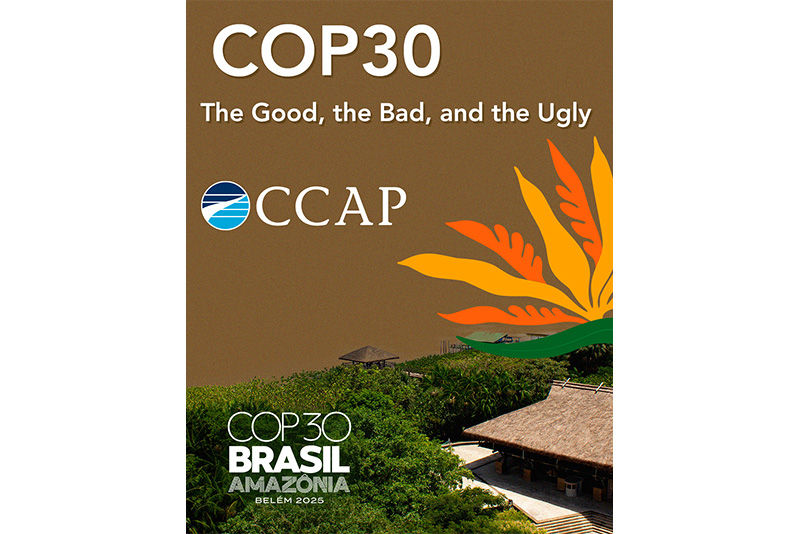Seizing the Moment to Align Oil and Gas Methane Mitigation
- Stacey Davis
- Mar 28, 2016
- 4 min read

A recent flurry of cross-border activity between the U.S. and its two North American neighbors appears poised to shift the continent towards a more unified oil and gas regulatory regime.
Last month the Interior Secretary Sally Jewell signed a memorandum of understanding with Mexico’s energy ministry to facilitate discussion and information sharing towards sustainable development of the oil and gas sector and common environmental standards.
And earlier this month, as part of a first formal bilateral meeting between U.S. President Barack Obama and Canadian Prime Minister Justin Trudeau, the U.S. and Canadian administrations issued a joint statement that highlighted common goals to reduce methane emissions from the oil and gas sector by 40-45% below 2012 levels by 2025, as well as additional steps towards achieving those goals.
In particular, the U.S. committed to begin immediately to develop regulations for methane emissions from existing oil and gas sources, including starting a process next month to require companies to provide information on existing emissions sources. The Canadians, meanwhile, agreed to regulate methane emissions from both new and existing sources, including an intention to “publish an initial phase of proposed regulations by early 2017.” This announcement also emphasized “the importance of the U.S. and Canada continuing to cooperate closely with Mexico on climate and energy action” and “shar(ing) knowledge of cost-effective methane reduction technologies and practices.”
These agreements are coming at a time of North American leadership in oil and gas production. The U.S. has become a world leader in shale gas and shale oil development, which is reflected in vast increases in domestic production. According to EIA, the U.S. produced 28.81 million cubic feet of natural gas last year, a historic high that reflects year-on-year growth each year over the last decade. Similarly, last year the U.S. pumped an average of 9.43 million barrels per day last year, the highest level since 1972. And despite recent setbacks related to U.S. rejection of the Keystone Pipeline and low oil prices, according to the U.S. EIA, Canada remains one of the world’s five largest energy producers and is the principal source of energy imports to the U.S.
Whereas U.S. growth in oil production mainly displaces imports from other countries, growth in U.S. natural gas production has led to important shifts in the choice of fuel used in domestic electricity production from coal to natural gas. In 2015, annual electricity production from natural gas was nearly on par with production from coal, and natural gas is projected to exceed coal production on an annual basis for the first time this year. With a much lower carbon intensity than coal at the point of combustion (117 lbs CO2 per million BTU vs. upwards of 205.7 lbs CO2 per million BTU), this shift to natural gas has helped lower the carbon intensity of U.S. electric generation. However, the overall climate benefits of this shift depend on the rate of methane leakage across the natural gas system.
Deployment of cost-effective solutions to mitigate methane emissions from oil and gas operations can help ensure that recent trends in energy consumption support efforts to meet U.S. and global climate mitigation goals. In fact, best practices towards methane mitigation have started to emerge from the experiences of U.S. participants in the Natural Gas Star program and states such as Colorado and California have been leaders in requiring strong practices.
As more countries take advantage of nascent shale gas resources or increase production by opening up more plays to private sector production, there is an opportunity to ensure that an ever-greater share of oil and gas production takes advantage of cost-effective opportunities to lower greenhouse gas emissions.
Recent constitutional changes opening up Mexico’s oil and gas sector to private investment after more than 75 years of a state monopoly presents a critical opportunity for expanded oil and gas production and methane mitigation. The inclusion of new players with the financial and technical capacity to raise oil and gas output presents a significant opportunity for renewed economic growth in Mexico’s oil and gas sector. At the same time, there is a risk that methane emissions could grow substantially. Making the effort now to better align methane regulations across the three North American neighbors will ensure that Mexico’s new development meets best practices and contributes to domestic and international emissions reductions. And beyond reducing greenhouse gas emissions, efforts towards greater alignment will provide enhanced certainty and reduced transaction costs for the regulated industry, and promote a level playing field for oil and gas development.

To support Mexico’s efforts towards low-methane hydrocarbon development, CCAP in partnership with the Clean Air Task Force and Mexico’s newly-established Agency for Safety, Energy and Environment (ASEA), is convening a workshop in Mexico City to share international best practices on methane mitigation from oil and gas operations. This project seeks to support ASEA’s ambitious schedule to define and implement standards and regulations for each of the oil and gas market segments. We expect to share lessons learned with other developing countries through the Climate and Clean Air Coalition (CCAC) oil and gas initiative, the Global Methane Initiative (GMI) and other international forums. CCAP is playing an active role in the jointly-organized Global Methane Forum taking place this week in Washington, DC. CCAP’s Laurence Blandford will be speaking on the GMI’s finance roundtable and CCAP was charged with convening a CCAC workshop on reducing methane emissions from the waste sector.




شيخ روحاني
رقم شيخ روحاني
الشيخ الروحاني
الشيخ الروحاني
شيخ روحاني سعودي
رقم شيخ روحاني
شيخ روحاني مضمون
Berlinintim
Berlin Intim
جلب الحبيب
https://www.eljnoub.com/
https://hurenberlin.com/